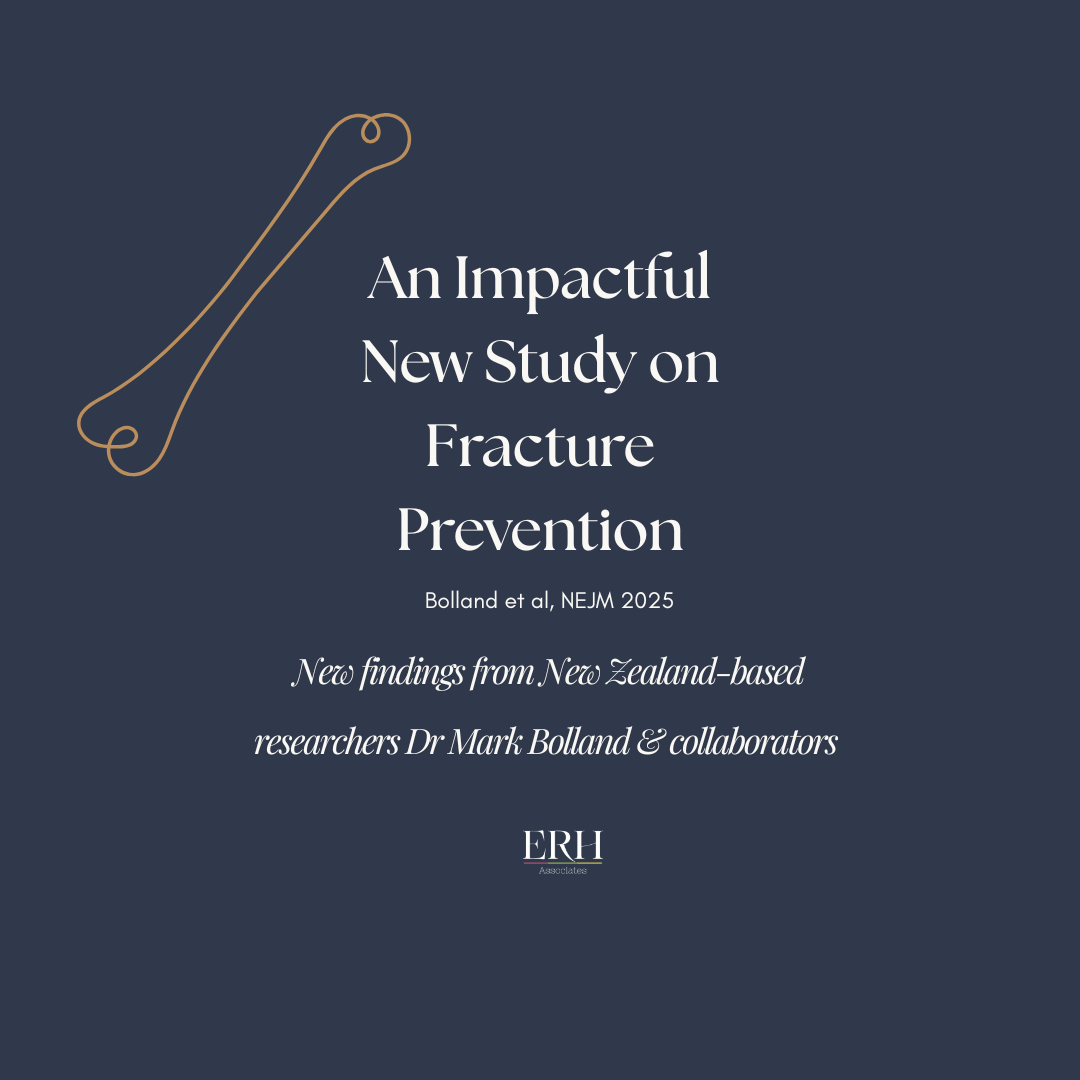A major 10-year study led by Dr. Mark Bolland and colleagues at the University of Auckland has been published in the New England Journal of Medicine, offering compelling new insights into fracture risk and prevention in the early years after menopause.
The findings suggest that just one or two infusions of zoledronate over a decade can significantly reduce vertebral fracture risk in postmenopausal women (not on hormone therapy) with only modest reductions in bone mineral density (BMD). For a group often considered too “low risk” to warrant treatment, this study may prompt a shift in how we approach prevention.
At ERH, we reflect on the significance of the study and its potential to reshape practice.
The Study in Brief
Who was studied?
- 1,065 postmenopausal women aged 50–60
- Not on Menopausal Hormonal Therapy (MHT)
- BMD T scores between 0 and -2.5 (not osteoporotic)
What were the interventions?
Participants were randomised to receive:
- Zoledronate at baseline and again at 5 years
- Zoledronate at baseline and placebo at 5 years
- Placebo at both time points
Follow-up over 10 years included spinal imaging and bone health assessments.
Key Results
Fracture risk was higher than anticipated:
- 11.1% of women in the placebo group experienced a vertebral fracture over 10 years
- This challenges the assumption that early postmenopausal women with modest bone loss are at low risk
Zoledronate made a clear difference:
- Vertebral fracture rates were 6.3% and 6.6% in the zoledronate groups
- This represents a ~42% relative risk reduction
Additional benefits:
- 5–9% higher BMD in treated groups at 5 and 10 years
- Bone turnover markers remained suppressed
- A trend toward fewer overall fractures (including fragility and major osteoporotic fractures)
Reassuring safety profile:
- No cases of osteonecrosis of the jaw or atypical femoral fractures
- Side effects were minimal and self-limiting
Why this Matters
This study suggests that the early postmenopausal window may carry more fracture risk than previously appreciated, particularly in women who aren’t on MHT.
For these women, infrequent zoledronate infusions offer a low-burden, long-acting preventive option. This approach could help reduce future fracture burden without the need for ongoing oral therapy or frequent medical visits.
Our Clinical Perspective
In our opinion, this is one of the most important studies we’ve seen in this space in recent years. It challenges us to reconsider when we initiate treatment. For women not using MHT, who have below-average bone density, this could be a simple and effective tool to prevent future fractures—with just one or two infusions over a decade.
Looking Ahead
While more research may help refine how we select candidates for treatment, this study provides strong evidence that proactive fracture prevention in early postmenopause is both feasible and effective.
It also serves as a reminder that bone density scans are only one marker of fracture risk —and that the first few years after menopause deserve closer attention, especially in women not using hormonal therapy.

You can find the study here:
See the New Zealand Herald article on the study here: https://www.nzherald.co.nz/nz/cheap-drug-given-once-a-decade-slashes-risk-of-bone-fractures-in-older-women-astonishing-kiwi-trial-discovers/CBRNPEEHR5G4PCY3ZA4ZCMGQ74/
Study Citation details:
2025 Jan 16;392(3):239-248.
Fracture Prevention with Infrequent Zoledronate in Women 50 to 60 Years of Age
Mark J Bolland 1, Zaynah Nisa 1, Anna Mellar 1, Chiara Gasteiger 1, Veronica Pinel 1, Borislav Mihov 1, Sonja Bastin 1, Andrew Grey 1, Ian R Reid 1, Greg Gamble 1, Anne Horne 1
Comments +